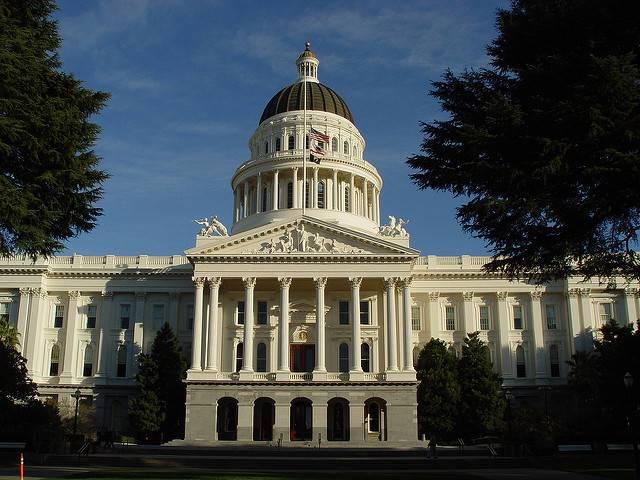
California has long been seen as a trendsetter on environmental issues, and one of the Golden State's key policies is its cap-and-trade program. Launched in early 2012, the program requires carbon-intensive companies to purchase permits that allow them to release greenhouse gas emissions into the atmosphere.
For the most part, this cap-and-trade system has been a win-win. While the oil industry and its allies would prefer to see more free permits in the California market, they view cap-and-trade as a far more market-friendly alternative than what many companies see as onerous regulations.
But some industry groups still object to the cap-and-trade program, and they set off a long legal fight in making their case that the emissions permit auction system is really a tax. And in California, tax measures must past a “super-majority,” or two-thirds vote in both houses of the state legislature. That did not occur when the cap-and-trade program became law earlier this decade; hence the litigation.
But in a verdict made by a state appeals court earlier this month, judges in a 2-1 decision ruled that that contrary to what the plaintiffs in this four-year-old case claimed, the cap-and-trade program was not an unconstitutional tax. “Reducing emissions reduces air pollution,” said the judges writing the majority decision. “Indeed, speculators have bought allowances seeking to profit from their sale, [and] taxes do not attract volunteers.”
In other words, as these emissions permits have value, in addition to the fact that companies are not forced to participate in the program, the cap-and-trade program does not qualify as a tax.
Nevertheless, despite some instances of speculation, the murky future of the cap-and-trade system had dissuaded companies from participating in the quarterly auctions. Over the past four years, the selling of these emissions allowances had allowed the state to generate $4.4 billion in revenues, much of which was earmarked for the state’s high-speed rail that aims to link San Francisco and Los Angeles. But as noted by the Sacramento Bee, February’s auction only sold $8.2 billion of advance 2020 auctions, and the state had expected to generate about $600 million in auction sales. Uncertainty has spooked many within the energy sector.
In addition, 2020 is when the current cap-and-trade system is scheduled to end. State legislators are keen to extend the program’s life this year, before next year’s midterm elections and 2018 gubernatorial race politics reduce any chance that meaningful legislation on any front can be passed. And despite the appeal’s court ruling on the cap-and-trade program, the litigation’s plaintiffs say they will continue to fight the law until a decision is made by the state’s supreme court. Therefore, legislators do not want to take any chances. While they still have Jerry Brown in power, they want to see a new cap-and-trade bill pass that two-thirds threshold in order to eliminate any legal uncertainty.
That is going to be a tough sell in the legislature, even though Sacramento has a history of horse-trading and deal-sweetening in order to ensure that important legislative bills pass. As Los Angeles Times reporters Melanie Mason and Chris Megerian profiled earlier this week, the legislature spent late nights passing a $52 billion transportation infrastructure plan with a two-thirds majority, with no votes to spare. Pulling a similar rabbit out of the hat in Sacramento yet again could be tough.
Nevertheless, California’s leaders seem keen on putting their thumbs in Donald Trump’s eyes at any prime opportunity. And there is some indication that a new cap-and-trade bill could score some bipartisan support. Furthermore, it is easier to extend current programs rather than draw up a new initiative from scratch. Despite some hiccups, the cap-and-trade program works for most of the state’s stakeholders, but it needs some tweaks in order for it to work for the long term. California may just show once again that it can lead on climate action, even if Washington, D.C. has abdicated that role since Trump took office on January 20.
Image credit: Franco Foloni/Flickr

Leon Kaye has written for 3p since 2010 and become executive editor in 2018. His previous work includes writing for the Guardian as well as other online and print publications. In addition, he's worked in sales executive roles within technology and financial research companies, as well as for a public relations firm, for which he consulted with one of the globe’s leading sustainability initiatives. Currently living in Central California, he’s traveled to 70-plus countries and has lived and worked in South Korea, the United Arab Emirates and Uruguay.
Leon’s an alum of Fresno State, the University of Maryland, Baltimore County and the University of Southern California's Marshall Business School. He enjoys traveling abroad as well as exploring California’s Central Coast and the Sierra Nevadas.














